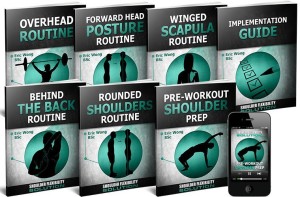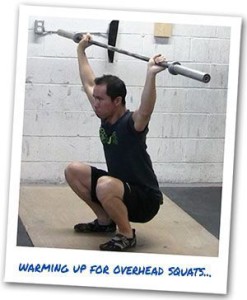 Shoulder Flexibility Solution Review
Shoulder Flexibility Solution Review
Coach Eric Wong strikes again with his shoulder flexibility program. After trying his huge success “Ultimate MMA Strength and Conditioning Program”, it’s time to try his shoulder flexibility solution.
Why did I pick this program to improve my shoulder flexibility? To make this clear and simple, I had a big shoulder injury in 2012 while practicing judo. I could not rotate my arm in all the normal positions. I was searching for a program that was made for MMA athletes to strengthen my shoulders and I saw on Eric Wong’s blog “the shoulder flexibility solution”.
Click here to visit Eric Wong’s Official Website
There is other reasons why someone would have tight shoulders. A lot of people that work in front of a computer adopt a posture that create discomfort which is a very bad habit and can create shoulder pain. It can also be a lack of movements that create the tightness in the shoulder. For the athletes, it can be caused by overuse of a muscle relating to your sport. Your level of stress and your sleeping position can play a part in the fact that you have tight shoulders.
There is tons of resources that you can find online but for now, we will be checking out the Shoulder flexibility solution.
When you buy the product, you receive an email with all the shoulder flexibility program items. You can download the PDF and the videos. You can also choose between different options like: The Pre-Workout Shoulder Prep, The Behind The Back Routine, The Overhead Routine, The Rounded Shoulders Routine, The Forward Head Posture Routine, The Winged Scapula Routine. You also have 2 bonuses: The Shoulder Regen and The Rotator Cuff Hardening.
Inside the program, you can start with a quick assessment guide to look where you’re at with your shoulder flexibility. Then, you can get a video of every exercises of each book. The videos are very well done, you can get them in HD or Standard definition.
This is a review site. Click here to visit Eric Wong’s Official Website
Shoulder Flexibility Solution:
The 6 Powerful Shoulder Flexibility Routines you can find in form of “books”:
- The Behind The Back Routine
- The Forward Head Posture Routine
- The Overhead Routine
- The Rounded Shoulders Routine
- The Winged Scapula Routine
- The Pre-Workout Shoulder Prep
Introducing The 6-Step Shoulder Flexibility System
- Mobilize the joint: Working the range of motion
- Address tissue quality: Blood flow to tissues
- Deactivate overactive muscles: Working on posture
- Create new cross bridges: Working flexibility with strength
- Stabilize the new rom: Stabilize new range of motion (in motion, out of motion)
- Functional integration: Integrate into your functional moving patterns
It’s called the 3D Flexibility System
Eric Wong formulated what he call the 3D Flexibility System. It addresses all of the factors limiting your flexibility so you can unlock your tight shoulders and use your body without restrictions, pain or injury.
Flexibility Factors:
- Strength Factor #1: Joint Stabilizer
- Strength Factor #2: Core
- Strength Factor #3: Prime Mover
- Neuromuscular Factor #1: Control
- Neuromuscular Factor #2: Reflexes
- Neuromuscular Factor #3: Pain Tolerance
- Soft Tissue Factor #1: Muscle
- Soft Tissue Factor #2: Fascia
- Soft Tissue Factor #3: Joint Capsule
Static Stretching Problems
Static stretching is not a lasting solution. You will not keep the gains you make. The tightness will always return. This type of stretching won’t improve your dynamic movement, it can actually hurt them. If you over perform a static stretch you can actually stretch your ligaments(that’s not good) ;).
Click here to visit Eric Wong’s Official Website
The Shoulder flexibility solution program really show you how to release the tightness.

